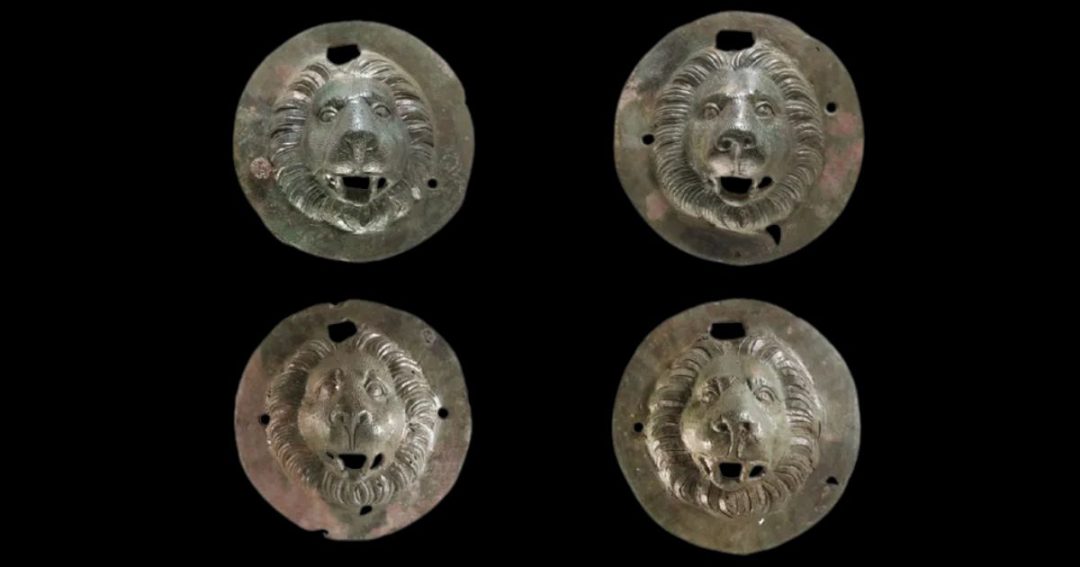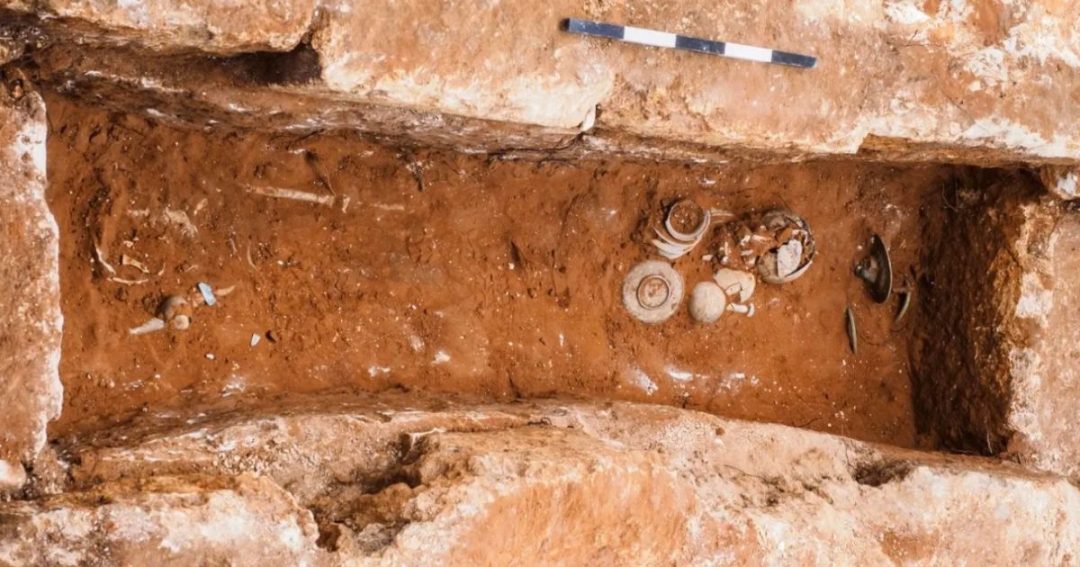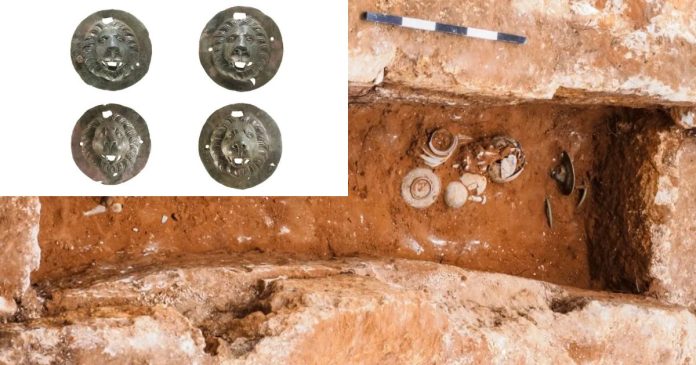Recent archaeological investigation at Khirbat Ibreika, central Israel, has yielded a significant assemblage of bronze artifacts within a Roman-era mortuary context. The discovery, comprising four decorated discs and associated fittings, presents notable characteristics warranting scholarly analysis.

Excavation Background: Salvage Work Ahead of Modern Infrastructure
The Israel Antiquities Authority (IAA) recovered the artifacts during salvage excavations in 2018, ahead of railway construction (Haddad & Zwiebel, 2024). The excavation identified eight stone-lined graves dating to the 1st or 2nd century CE. The bronze objects were found deposited in an ordered arrangement at the southern terminus of one grave.

The Assemblage: Lion-Headed Bronze Discs with Ring Fittings
The assemblage consists of four approximately 1,900-year-old bronze discs, each featuring a three-dimensional lion head appliqué. Accompanying these discs were four bronze rings, interpreted as handles, which appear to have been affixed to the apex of the lion heads. This configuration—handles attached above the heads—distinguishes the Khirbat Ibreika finds from more commonly documented Roman-period parallels, where handles typically pass through the lions’ mouths. Haddad and Zwiebel (2024) characterize the assemblage as “unique and rare.”
Interpreting Function: Coffin Handles with Practical and Ritual Use
Associated material evidence includes an iron nail with wood residues. This indicates the former presence of a wooden coffin that has not survived. The main hypothesis suggests the bronze discs, attached via the rings, served as decorative coffin handles. This setup would have helped transport and lower the coffin into the grave. Longitudinal wooden rods may have been inserted through the rings to provide extra leverage. However, all four discs and handles were found stacked at one end of the grave chamber, which complicates the depositional context. Haddad and Zwiebel (2024) argue that it is unlikely all components detached and gathered in one spot during burial. This suggests alternative explanations are needed.
SSymbolism and Iconography: Lions, Rings, and Cosmological Allusions
The lion motif holds well-established symbolic resonance in antiquity, signifying attributes such as strength, courage, and nobility across multiple cultures. Within the Greco-Roman sphere, lions frequently functioned as apotropaic guardians for sacred and funerary spaces. Consequently, the presence of lion iconography in this mortuary setting may denote the elevated social status of the interred individual.
Furthermore, the researchers postulate a potential symbolic dimension for the ring handles positioned above the lions’ heads. Drawing upon comparative iconographic studies (e.g., relevant 2022 scholarship cited by Haddad & Zwiebel), they suggest these rings may represent cosmological symbols, such as the “wheel of the zodiac” or the “wheel of life.” This interpretation tentatively references ancient artistic depictions associating the Hellenistic deity Aion—a figure connected to cyclical time, eternity, and the zodiac—with leonine features, notably a lion-headed anthropomorphic form entwined by serpents. Scholars have not universally attested such syncretic representations of Aion in classical art, and the topic remains under ongoing academic debate
Concluding Observations: Between Utility and Ritual in Roman Burials
Although the Khirbat Ibreika bronze discs likely served a practical role as coffin fittings, their distinctive form and intentional placement suggest that they also carried ritual or symbolic significance, which scholars have yet to fully clarify.The assemblage represents a notable contribution to the material record of Roman-period mortuary practices in the region.
References
Haddad, E., & Zwiebel, E. (2024). [Implicit reference to publication in ‘Atiqot]. ‘Atiqot, [Volume/Issue]. Israel Antiquities Authority.

